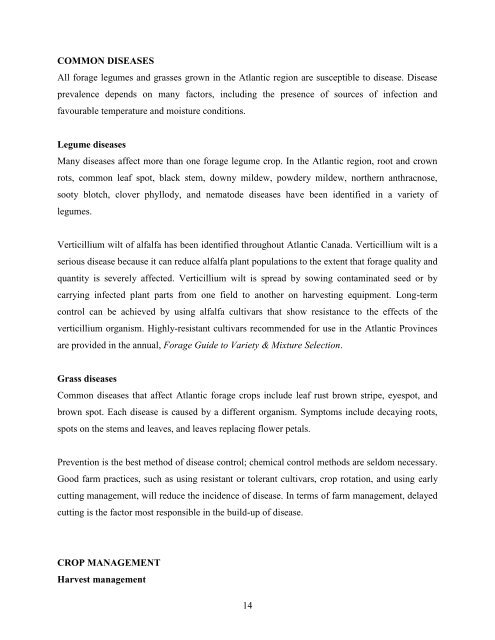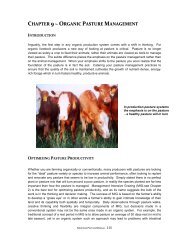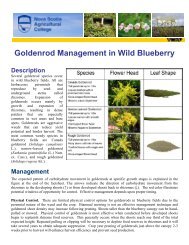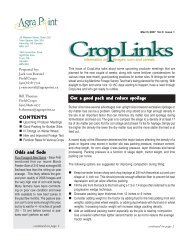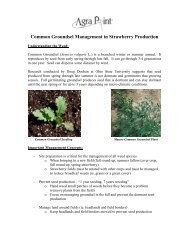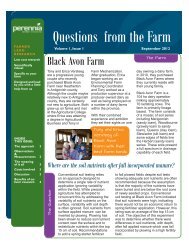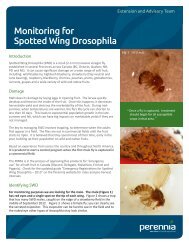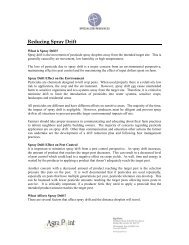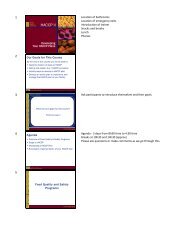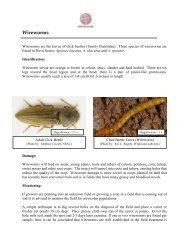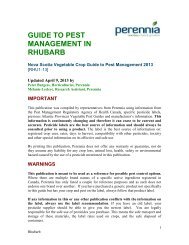Create successful ePaper yourself
Turn your PDF publications into a flip-book with our unique Google optimized e-Paper software.
COMMON DISEASES<br />
All forage legumes and grasses grown in the <strong>Atlantic</strong> region are susceptible to disease. Disease<br />
prevalence depends on many factors, including the presence of sources of infection and<br />
favourable temperature and moisture conditions.<br />
Legume diseases<br />
Many diseases affect more than one forage legume crop. In the <strong>Atlantic</strong> region, root and crown<br />
rots, common leaf spot, black stem, downy mildew, powdery mildew, northern anthracnose,<br />
sooty blotch, clover phyllody, and nematode diseases have been identified in a variety of<br />
legumes.<br />
Verticillium wilt of alfalfa has been identified throughout <strong>Atlantic</strong> Canada. Verticillium wilt is a<br />
serious disease because it can reduce alfalfa plant populations to the extent that forage quality and<br />
quantity is severely affected. Verticillium wilt is spread by sowing contaminated seed or by<br />
carrying infected plant parts from one field to another on harvesting equipment. Long-term<br />
control can be achieved by using alfalfa cultivars that show resistance to the effects of the<br />
verticillium organism. Highly-resistant cultivars recommended for use in the <strong>Atlantic</strong> Provinces<br />
are provided in the annual, <strong>Forage</strong> <strong>Guide</strong> to Variety & Mixture Selection.<br />
Grass diseases<br />
Common diseases that affect <strong>Atlantic</strong> forage crops include leaf rust brown stripe, eyespot, and<br />
brown spot. Each disease is caused by a different organism. Symptoms include decaying roots,<br />
spots on the stems and leaves, and leaves replacing flower petals.<br />
Prevention is the best method of disease control; chemical control methods are seldom necessary.<br />
Good farm practices, such as using resistant or tolerant cultivars, crop rotation, and using early<br />
cutting management, will reduce the incidence of disease. In terms of farm management, delayed<br />
cutting is the factor most responsible in the build-up of disease.<br />
CROP MANAGEMENT<br />
Harvest management<br />
14


